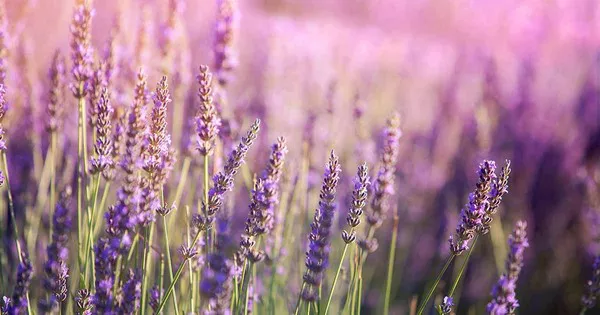In the delicate dance of garden maintenance, one persistent challenge is the presence of snails. These voracious mollusks can wreak havoc on a carefully cultivated garden, devouring tender leaves and delicate blooms with remarkable efficiency. However, hope is not lost for gardeners seeking to protect their floral displays from these slimy invaders. By strategically selecting flowers that snails find unpalatable, one can create a sanctuary of beauty that remains untouched by their appetites. In this comprehensive guide, we delve into the world of snail-resistant flowers, exploring their characteristics and offering insights into how they can be integrated into gardens to deter these pesky pests.
Understanding Snail Behavior and Preferences:
Before diving into the realm of snail-resistant flowers, it is essential to understand the factors that influence snail behavior and their culinary preferences. Snails are primarily nocturnal creatures, venturing out under the cover of darkness to forage for food. They are attracted to moisture and thrive in damp environments, making gardens with ample foliage and irrigation systems particularly appealing to them. While snails have a varied diet, they tend to favor certain types of plants over others. Succulent leaves and soft, tender shoots are particularly enticing to snails, providing them with a satisfying meal that sustains their voracious appetites.
Characteristics of Snail-Resistant Flowers:
In the battle against snails, knowledge is power. Armed with an understanding of snail behavior and preferences, gardeners can begin to identify flowers that possess characteristics that make them unappealing to these garden pests. Snail-resistant flowers typically exhibit one or more of the following traits:
Fragrance: Many snails rely heavily on their sense of smell to locate food. Flowers with strong, pungent fragrances can act as a deterrent, making them less attractive to snails.
Texture: Snails prefer to feast on plants with soft, succulent leaves. Flowers with tough, fibrous foliage or hairy textures can be less palatable to snails, discouraging them from feeding.
Toxicity: Some flowers produce chemical compounds that are toxic to snails. While these compounds may not be harmful to humans or other animals, they can act as a natural deterrent to snails, preventing them from consuming the plant.
Bitterness: Certain flowers contain compounds that impart a bitter taste, deterring snails from feeding on them. While bitterness may not be noticeable to humans, it can be enough to dissuade snails from consuming the plant.
Height and Accessibility: Flowers that are elevated or otherwise difficult for snails to reach can also be effective at avoiding damage. Tall stems or flowers with raised blooms can make it challenging for snails to access their desired meal, reducing the likelihood of damage.
Top Snail-Resistant Flowers for the Garden:
Armed with an understanding of the characteristics that make flowers unappealing to snails, let us explore some top contenders for inclusion in a snail-resistant garden:
1. Lavender (Lavandula spp.): Known for its fragrant blooms and aromatic foliage, lavender is a popular choice for gardens seeking to repel snails. The strong scent of lavender acts as a natural deterrent, making it less appealing to snails. Additionally, the texture of lavender leaves is somewhat rough, further discouraging snail feeding.
2. Geranium (Pelargonium spp.): Geraniums are prized for their vibrant flowers and resilience in the garden. These plants produce a strong, citrus-like scent that snails find unpalatable, helping to protect them from damage. Geranium leaves are also somewhat leathery in texture, making them less desirable to snails.
3. Marigold (Tagetes spp.): Marigolds are renowned for their cheerful blooms and ability to repel pests in the garden. These plants produce compounds that are toxic to many insects and pests, including snails. Marigold foliage has a slightly bitter taste, further deterring snails from feeding on them.
4. Snapdragon (Antirrhinum majus): Snapdragons are valued for their tall spikes of colorful blooms and resistance to snails. These flowers possess a unique structure that makes them less accessible to snails, as the petals are tightly clustered together. Additionally, snapdragon foliage has a slightly bitter taste, discouraging snail feeding.
5. Foxglove (Digitalis spp.): Foxgloves are known for their tall spires of bell-shaped flowers and ability to thrive in shady conditions. These plants contain compounds that are toxic to both humans and animals, including snails. While caution should be exercised when handling foxgloves, their toxicity can help protect them from snail damage in the garden.
Conclusion
In the ongoing battle against garden pests, snails remain a formidable adversary for many gardeners. However, by strategically selecting flowers that possess characteristics unappealing to snails, gardeners can create a sanctuary of beauty that remains untouched by their appetites. From fragrant lavender to toxic foxgloves, the world of snail-resistant flowers offers a diverse array of options for gardeners seeking to protect their floral displays. By understanding snail behavior and preferences and choosing plants accordingly, gardeners can enjoy the beauty of their gardens without the fear of snail-induced damage.


